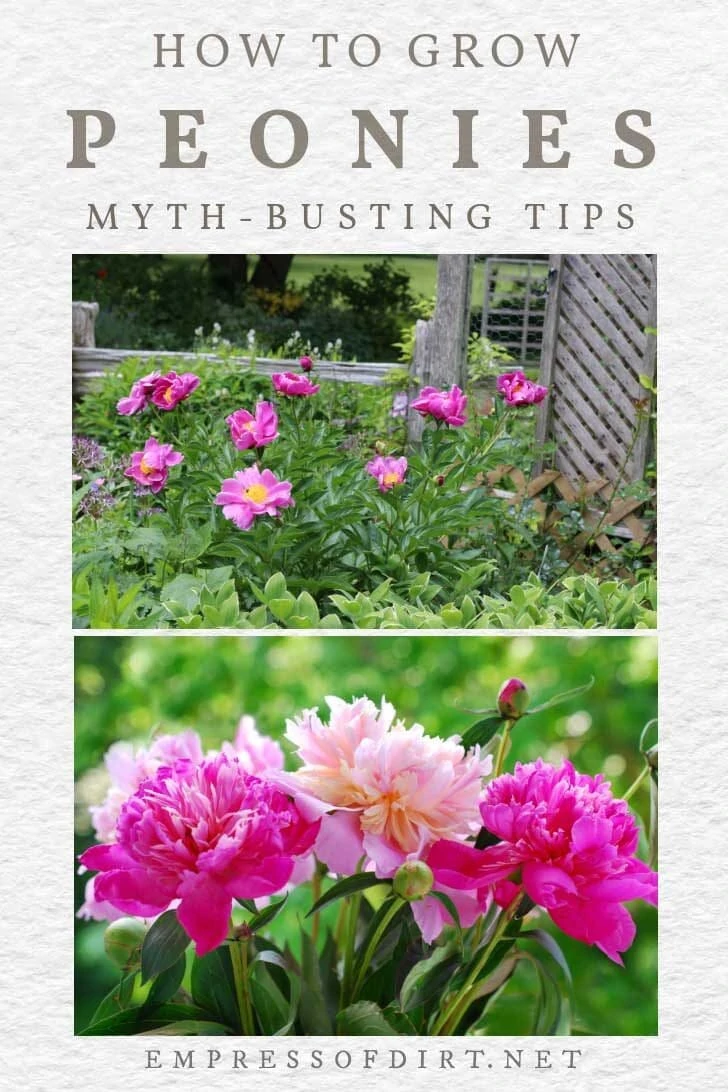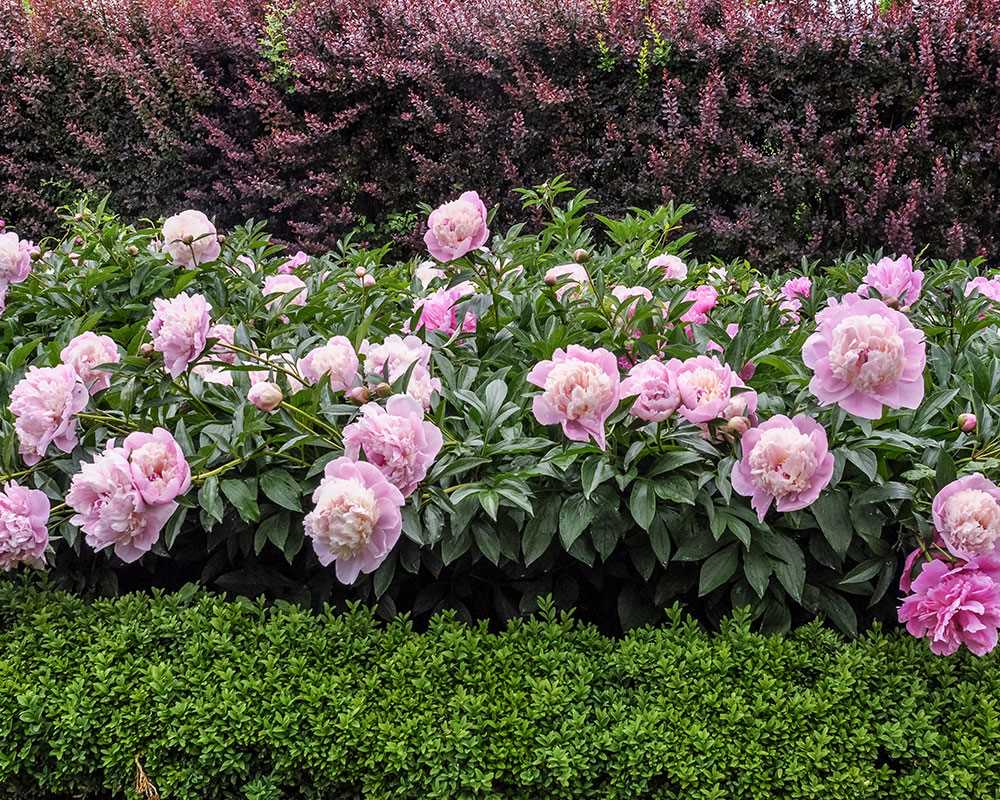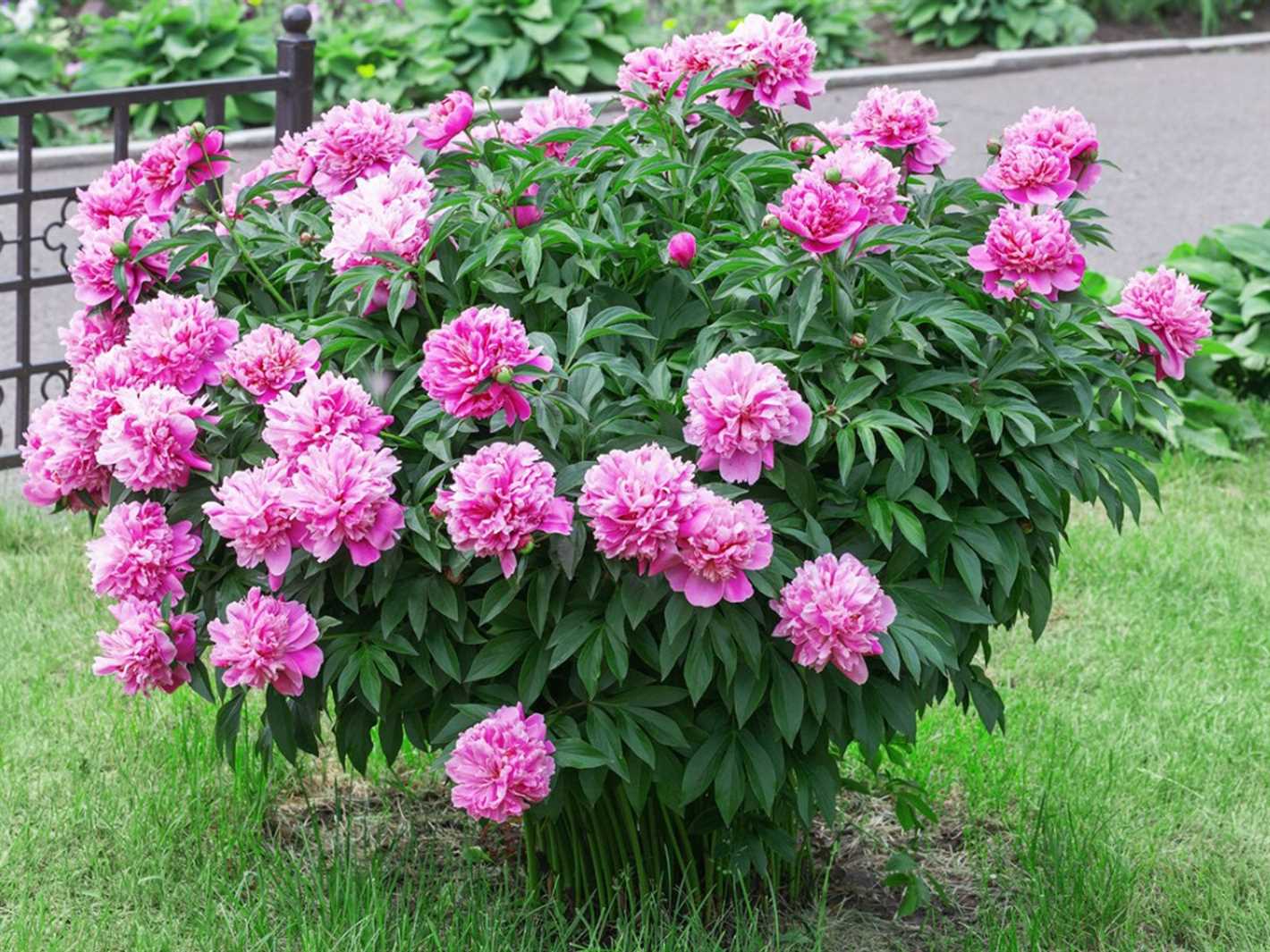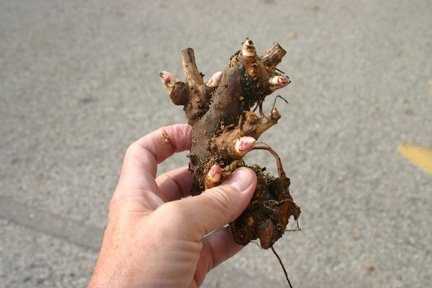- The Dangers of Burying Peonies
- Root Suffocation
- Poor Flowering
- Insect and Disease Infestation
- Tips for Planting Peonies at the Right Depth
- Importance of Proper Peony Planting Depth
- Benefits of planting at the right depth:
- Choosing the right planting depth:
- Understanding the Optimal Peony Planting Depth
- Common Mistakes in Burying Peonies Too Deep
- Negative Effects of Planting Peonies Too Deep
- Signs that Your Peonies are Buried Too Deep
- Tips for Avoiding Deep Planting of Peonies
- 1. Choose the Right Location
- 2. Prepare the Soil Properly
- 3. Create a Mound
- 4. Place the Peony Roots on the Mound
- 5. Backfill the Hole
- 6. Water and Mulch
- 7. Regularly Monitor and Adjust
- 8. Avoid Overwatering
- 9. Prune Correctly
- 10. Learn from Experience
- The Consequences of Neglecting Peonies’ Planting Depth
- Stunted Growth and Reduced Bloom
- Vulnerability to Diseases and Pests
- Delayed and Irregular Blooming
- Inhibited Resilience and Longevity
- Conclusion
- Summary: Why You Should Avoid Planting Peonies Too Deep
- Questions and Answers:
- What are peonies?
- Can peonies be planted too deep?
- Why is burying peonies too deep dangerous?
- When should peonies be planted?
- How deep should peonies be planted?
- Videos: How to Plant Peony Tubers in Fall

Peonies are beloved for their large, colorful blooms and their sweet fragrance. They are a popular choice for many gardeners, but there is a common mistake that can spell disaster for these beautiful flowers – burying them too deep. While it may seem like deeper planting would provide better stability and protection for the plants, in reality, it can lead to a host of issues that can harm or even kill the peonies.
One of the main dangers of burying peonies too deep is that it can suffocate their roots. Peonies have a shallow root system, and when they are planted too deep, the roots can become starved for oxygen. This can lead to root rot and other fungal infections that can quickly spread and kill the plant. Additionally, deep planting can make it more difficult for the plant to take up water and nutrients, further weakening it.
Another issue with burying peonies too deep is that it can inhibit their ability to flower. Peonies need a certain amount of chill hours during the winter in order to bloom properly in the spring. When they are buried too deep, they may not receive enough chill hours, resulting in sparse or no blooms. This can be incredibly frustrating for gardeners who have gone to the effort of planting peonies for their beautiful flowers.
So, when should you plant peonies and how deep should you bury them? The general rule of thumb is to plant peonies with their eyes, or the growth buds, no more than 2 inches below the soil surface. This allows the roots to have access to enough oxygen and nutrients, while still providing stability for the plant. It’s also important to avoid planting them too close to other plants or structures, as this can lead to overcrowding and increased competition for resources.
In conclusion, while it may be tempting to bury peonies deep for their own protection, it is important to avoid this practice to ensure the health and longevity of these beautiful flowers. By following proper planting guidelines, you can enjoy the full beauty of peonies without risking their well-being.
The Dangers of Burying Peonies
Peonies are beautiful flowering plants that are loved by gardeners for their vibrant blooms and sweet fragrance. However, burying peonies too deep can have negative effects on their growth and overall health. Understanding why you should avoid planting peonies too deep is essential for the success of your garden.
Root Suffocation
One of the main dangers of burying peonies too deep is root suffocation. Peonies have shallow root systems that require oxygen to survive. When planted too deep, the soil can compact and become too heavy, preventing the roots from accessing the necessary oxygen. This lack of oxygen can lead to root rot and ultimately the death of the plant.
Poor Flowering
Burying peonies too deep can also result in poor flowering. Peonies need to be planted at the right depth to ensure that their flower buds are exposed to the sunlight. When peonies are buried too deep, their flower buds can remain underground, preventing them from receiving the sunlight they need to bloom. This can lead to weak or no flowers at all.
Insect and Disease Infestation
Deeply buried peonies are more susceptible to insect and disease infestations. The moist and compacted soil around the deeper roots can create an ideal environment for pests and diseases to thrive. Insects, such as ants, can also be attracted to peonies planted too deep, as they are searching for the honeydew secreted by aphids. These infestations can weaken and damage the plant, reducing its overall health and vigor.
Tips for Planting Peonies at the Right Depth
To avoid the dangers of burying peonies too deep, follow these tips when planting:
- Ensure that the tops of the peony tubers are no more than 2 inches below the soil surface.
- Loosen the soil before planting to promote good drainage and prevent compaction.
- Amend heavy clay soils with organic matter to improve drainage.
- Water peonies sparingly after planting to prevent excessive moisture.
By planting peonies at the right depth and providing them with proper care, you can enjoy their beautiful blooms and ensure their long-term health in your garden.
Importance of Proper Peony Planting Depth
Planting depth is crucial for the successful growth and blooming of peonies. It determines the health and vigor of the plants, as well as their ability to produce beautiful flowers.
Benefits of planting at the right depth:
- Optimal root development: By planting peonies at the proper depth, you ensure that the roots have enough space to grow and establish a strong foundation. This allows the plant to access necessary nutrients and water, promoting overall plant health and longevity.
- Better blooming: Peonies that are planted at the correct depth are more likely to produce abundant and vibrant flowers. When the bud eyes (small, red-colored growth points on the peony root) are properly positioned at the soil surface, they have a better chance to receive the right amount of sunlight and air, resulting in bigger and more beautiful blooms.
- Reduced risk of disease: Planting peonies too deep can create a damp environment around the crown of the plant, which can lead to rotting and the development of fungal diseases. By planting at the right depth, you promote good air circulation and prevent excessive moisture accumulation, reducing the risk of crown rot and other diseases.
Choosing the right planting depth:
The ideal planting depth for herbaceous peonies is 1-2 inches below the soil surface. This allows the bud eyes to be just barely covered by soil, ensuring they receive adequate sunlight and air circulation.
| Plant type | Recommended planting depth |
|---|---|
| Herbaceous peonies | 1-2 inches below soil surface |
| Tree peonies | 1-2 inches below soil surface |
| Suffruticosa peonies (woody tree peonies) | 1-2 inches below soil surface |
Note: it’s important to follow specific planting instructions for each peony variety, as planting depths may vary slightly.
By ensuring that peonies are planted at the proper depth, you create the best conditions for their growth and blooming, allowing you to enjoy their beauty for years to come.
Understanding the Optimal Peony Planting Depth


Planting peonies at the correct depth is crucial for their health and longevity. If planted too deep, peonies may struggle to emerge from the ground and produce flowers. On the other hand, planting them too shallow can expose the roots to freezing temperatures, resulting in damage or death of the plant.
Recommended planting depth:
- For herbaceous peonies: 1-2 inches (2.5-5 cm) below the soil surface.
- For tree peonies: 2-3 inches (5-7.5 cm) below the soil surface.
It’s important to note that the optimal planting depth may vary slightly depending on the climate and soil conditions in your area. If uncertain, it’s best to consult local gardening resources or seek advice from experienced gardeners in your region.
Reasons for planting peonies at the correct depth:
- Root establishment: Planting peonies at the proper depth allows the roots to establish themselves in the soil and anchor the plant securely. This promotes stability and helps the plant withstand wind and other weather conditions.
- Flower production: Planting peonies at the correct depth ensures that the eyes (buds) on the plants are positioned correctly. If planted too deep, the eyes may not receive enough light and fail to produce flowers. If planted too shallow, the eyes may be exposed to excessive heat or cold, preventing optimal flower production.
- Protection from freezing: Planting peonies at the right depth helps protect their roots from freezing during winter. The insulating layer of soil helps regulate temperature fluctuations and prevents damage to the plants.
Planting peonies at the optimal depth:
| Step | Description |
|---|---|
| 1 | Prepare the planting area by loosening the soil and removing any weeds or debris. |
| 2 | Dig a hole that is wide and deep enough to accommodate the peony roots. |
| 3 | Place the peony plant in the hole, making sure the eyes (buds) are facing upwards. |
| 4 | Backfill the hole with soil, gently firming it around the roots as you go. |
| 5 | Water the newly planted peony thoroughly to settle the soil. |
| 6 | Apply a layer of mulch around the plant to help conserve moisture and suppress weed growth. |
Following these guidelines and understanding the optimal planting depth for peonies will increase your chances of success and ensure your plants thrive for years to come.
Common Mistakes in Burying Peonies Too Deep
When it comes to planting peonies, proper depth is crucial for their growth and overall health. Unfortunately, it is a common mistake for gardeners to bury peonies too deep, leading to a variety of issues. Here are some common mistakes to avoid:
- Planting the tubers too low in the ground: Peonies should be planted so that the eyes, or growing buds, are only 1-2 inches below the soil surface. Planting them too deep can result in weak growth or even no growth at all, as the eyes may not be able to break through the soil.
- Using too much soil or compost: Adding excessive soil or compost on top of the peony tubers can cause them to be buried deeper than intended. It’s important to only use a thin layer of soil or compost to cover the tubers, allowing the eyes to reach the surface easily.
- Not taking into account the variety of peony: Different varieties of peonies have specific planting requirements. Some may need to be planted slightly deeper than others. It’s important to research the specific variety you are planting and follow the recommended planting depth.
- Not considering soil drainage: Peonies prefer well-draining soil. Burying them too deep in heavy or poorly drained soil can lead to root rot and other diseases. It’s important to ensure that the planting site has good drainage to prevent these issues.
- Ignoring the natural planting depth: Peonies have a natural tendency to come up to the surface over time. By planting them too deep, you are going against their natural growth habit. This can result in weak or stunted growth and fewer flowers.
By avoiding these common mistakes and planting peonies at the correct depth, you can maximize their growth and ensure beautiful blooms for years to come.
Negative Effects of Planting Peonies Too Deep
While peonies are a beautiful addition to any garden, planting them too deep can have negative effects on their overall health and productivity. Here are some of the potential problems that can arise from burying peonies too deep:
- Delayed Bloom: Peonies that are planted too deep may take longer to bloom or may not bloom at all. The excessive soil covering the buds can hinder their ability to break through the surface and reach sunlight.
- Weak Stems: When peonies are planted too deep, they may develop weak and spindly stems. This can make the plant floppy and unable to support its large and heavy flowers. In severe cases, the stems may even be unable to support the weight of the blooms, causing them to bend or break.
- Reduced Flower Production: Peonies that are buried too deep may produce fewer flowers compared to those that are planted at the correct depth. The lack of sunlight and air circulation can inhibit the development of flower buds, resulting in a less prolific display.
- Poor Root Development: Planting peonies too deep can lead to poor root development. If the roots are buried too deeply, they may struggle to establish and grow properly. Shallow, weak roots can make the plant more susceptible to disease, drought, and other environmental stressors.
It’s important to ensure that peonies are planted at the correct depth to promote optimum growth and flowering. By following the recommended planting guidelines, you can avoid these negative effects and enjoy healthy, vibrant peonies in your garden.
Signs that Your Peonies are Buried Too Deep
While peonies are generally hardy plants, burying them too deep can lead to problems that may affect their growth and overall health. Here are some signs that indicate your peonies may be buried too deep:
- Lack of blooming: One of the telltale signs that your peonies are buried too deep is a lack of blooming. If the foliage is healthy but there are no flowers, it could be because the peony roots are not receiving enough sunlight and are struggling to reach the surface.
- Sparse foliage: Another sign that your peonies are buried too deep is when they have sparse foliage. If you notice that your peonies have thin and weak leaves, it could be a result of insufficient light reaching the plant due to excessive soil covering.
- Root rot: Burying peonies too deep can lead to root rot, which is caused by excess moisture being trapped around the roots. If you observe black or brown mushy roots when digging around your peony plants, it is likely that they have been buried too deep and are suffering from root rot.
- Stunted growth: Peonies that are buried too deep often exhibit stunted growth. If your peonies are not reaching their full potential height and are producing smaller flowers than expected, it could be due to the restriction caused by excessive soil covering.
If you notice any of these signs, it is important to take action to rectify the situation and avoid further damage to your peonies. The best course of action is to carefully dig up the peony plants and replant them at the correct depth, which is typically about 1-2 inches below the soil surface. Remember to provide enough sunlight, well-drained soil, and regular watering to ensure the healthy growth of your peonies.
Tips for Avoiding Deep Planting of Peonies
1. Choose the Right Location
Before planting peonies, it is important to choose the right location that provides adequate sunlight and well-draining soil. Peonies need at least six hours of direct sunlight each day to thrive, so avoid planting them in shaded areas.
2. Prepare the Soil Properly
To ensure that peonies do not get buried too deep, it is crucial to prepare the soil properly. Dig a hole that is wide and shallow, rather than deep. The hole should be around two feet wide and one foot deep. Break up any large clumps of soil and remove any rocks or roots that may obstruct the root growth of the peonies.
3. Create a Mound


After preparing the soil, create a small mound in the center of the hole. This will help elevate the root crown of the peony, preventing it from being buried too deeply.
4. Place the Peony Roots on the Mound
Gently spread out the peony roots on top of the mound, ensuring that they are not twisted or bent. The roots should be in contact with the soil, but not buried beneath it.
5. Backfill the Hole
Gradually fill in the hole with soil, gently tamping it down to remove any air pockets. Be careful not to bury the peony crown too deeply. The crown should be positioned just below the soil surface, with the eyes or buds pointing upwards.
6. Water and Mulch
After planting the peony, water it thoroughly to help settle the soil. Apply a layer of organic mulch around the plant to help retain moisture and suppress weed growth.
7. Regularly Monitor and Adjust


It is important to regularly monitor the depth of the peony crown, especially during the first growing season. If the crown appears to be sinking or getting buried, gently lift the plant and add additional soil or mulch to elevate it.
8. Avoid Overwatering
While peonies require regular watering, they do not tolerate overly wet conditions. Avoid overwatering, as this can lead to root rot and other issues. Ensure that the soil is well-draining and water only when the top inch of soil feels dry.
9. Prune Correctly
When pruning peonies, be mindful of the depth at which you are cutting. Avoid cutting too close to the crown, as this can lead to damage or disease. Leave at least two inches of stem above the crown when pruning.
10. Learn from Experience
Every garden and climate is unique, so it is important to learn from experience and adapt your planting techniques accordingly. Observe the growth and performance of your peonies over time and make adjustments as needed to ensure their long-term health and vitality.
The Consequences of Neglecting Peonies’ Planting Depth
Gardening enthusiasts are well aware of the delicate balance required for successful peony cultivation. One crucial factor that often determines peonies’ ability to thrive is their planting depth. Neglecting peonies’ planting depth can have severe consequences for these beautiful flowers, and it is important to understand why.
Stunted Growth and Reduced Bloom


When peonies are not planted at the proper depth, their growth can be stunted, and their ability to produce abundant blooms can be significantly compromised. Peonies that are buried too shallow can struggle to establish a robust root system, leading to weak and stunted growth. On the other hand, planting peonies too deep can result in reduced sunlight reaching the plant, hindering photosynthesis and ultimately affecting their ability to produce large and vibrant flowers.
Vulnerability to Diseases and Pests
Peonies that are not planted at the correct depth can become more susceptible to diseases and pests. Shallowly planted peonies may have their roots exposed, making them an easy target for soil-borne diseases and pests. This vulnerability can lead to root rot, fungal infections, and infestations, which can severely damage the plant’s overall health and vitality.
Delayed and Irregular Blooming
Improper planting depth can also disrupt the peonies’ blooming schedule. Shallowly planted peonies may flower earlier than desired, as they are more likely to be influenced by temperature fluctuations. Conversely, peonies buried too deep may have delayed blooming cycles, as the cooler soil temperatures can delay their emergence. This irregular blooming pattern can be frustrating for gardeners who want to enjoy a consistent display of peony blooms.
Inhibited Resilience and Longevity
Peonies that are not planted at the correct depth may also have compromised resilience and longevity. Shallow planting can result in weaker root systems, leaving the plant more vulnerable to drought stress and other environmental factors. Deep planting, on the other hand, can lead to poor drainage, root suffocation, and even root rot. Over time, these issues can weaken the plant and impact its ability to thrive and persist in the garden.
Conclusion
Proper planting depth is a critical factor in the success of peony cultivation. Neglecting peonies’ planting depth can result in stunted growth, reduced bloom, increased vulnerability to diseases and pests, delayed and irregular blooming, as well as compromised resilience and longevity. By understanding the consequences of neglecting planting depth, gardeners can ensure the health and beauty of their peonies for years to come.
Summary: Why You Should Avoid Planting Peonies Too Deep
Planting peonies at the proper depth is crucial for their health and longevity. While they are resilient plants, planting them too deep can be detrimental to their growth and flowering potential. Here are some reasons why you should avoid planting peonies too deep:
- Stunted Growth: When peonies are planted too deep, it inhibits their ability to establish strong root systems. This can lead to stunted growth and weak plants.
- Poor Flowering: Peonies require a specific amount of sunlight to produce beautiful blooms. If they are buried too deep, they may not receive enough light, resulting in fewer flowers or no flowers at all.
- Rot and Diseases: Planting peonies too deep can create a damp and poorly-drained environment, which is ideal for fungal diseases and rot. Excessive moisture around the crown and roots can cause the plants to rot and die.
- Delayed Blooming: When peonies are planted at the correct depth, they typically bloom within a season or two. However, burying them too deep can delay their blooming, often by several years.
- Weakened Winter Hardiness: Deeply planted peonies may not be able to withstand harsh winter conditions as effectively. The deeper they are buried, the more susceptible they are to winter damage and frost heaving.
To avoid these risks, make sure to plant peonies at the recommended depth, which is no more than 2 inches below the soil surface. This allows the buds to receive adequate light and promotes healthy growth and flowering.
Questions and Answers:
What are peonies?
Peonies are flowering plants that produce large, showy flowers in various colors. They are perennials, meaning they come back year after year.
Can peonies be planted too deep?
Yes, peonies can be planted too deep. In fact, burying peonies too deep is one of the most common mistakes people make when planting them.
Why is burying peonies too deep dangerous?
Burying peonies too deep can be dangerous because it can lead to poor flower production and even cause the plant to die. Peonies have shallow feeder roots that need to be close to the surface in order to absorb nutrients and water.
When should peonies be planted?
Peonies should be planted in the early fall, ideally in September or October. This gives the plants time to establish their root systems before the ground freezes.
How deep should peonies be planted?
Peonies should be planted so that the buds are about 1-2 inches below the soil surface. Planting them any deeper can cause problems with flower production and overall plant health.







